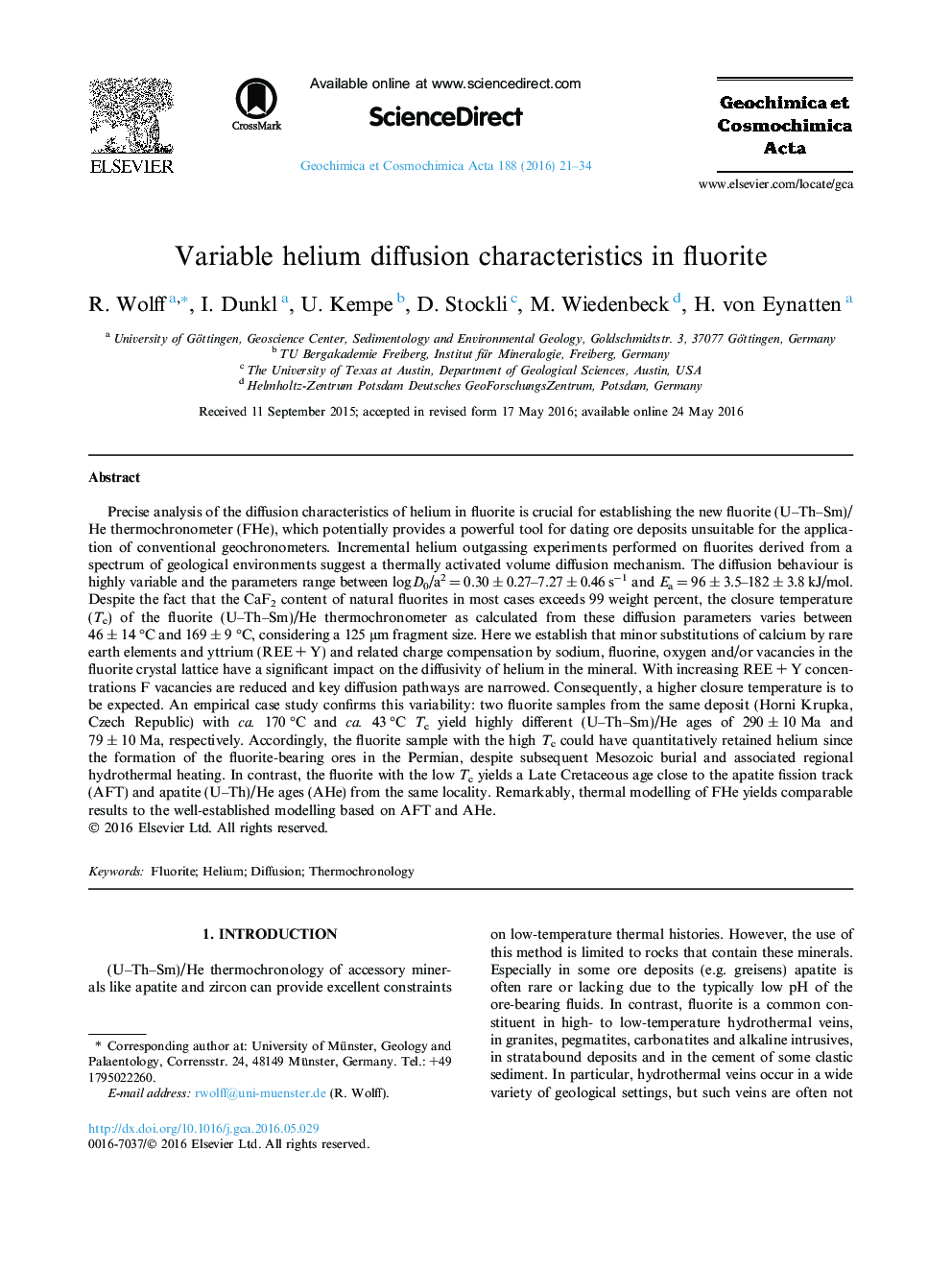| Article ID | Journal | Published Year | Pages | File Type |
|---|---|---|---|---|
| 4701759 | Geochimica et Cosmochimica Acta | 2016 | 14 Pages |
Precise analysis of the diffusion characteristics of helium in fluorite is crucial for establishing the new fluorite (U–Th–Sm)/He thermochronometer (FHe), which potentially provides a powerful tool for dating ore deposits unsuitable for the application of conventional geochronometers. Incremental helium outgassing experiments performed on fluorites derived from a spectrum of geological environments suggest a thermally activated volume diffusion mechanism. The diffusion behaviour is highly variable and the parameters range between log D0/a2 = 0.30 ± 0.27–7.27 ± 0.46 s−1 and Ea = 96 ± 3.5–182 ± 3.8 kJ/mol. Despite the fact that the CaF2 content of natural fluorites in most cases exceeds 99 weight percent, the closure temperature (Tc) of the fluorite (U–Th–Sm)/He thermochronometer as calculated from these diffusion parameters varies between 46 ± 14 °C and 169 ± 9 °C, considering a 125 μm fragment size. Here we establish that minor substitutions of calcium by rare earth elements and yttrium (REE + Y) and related charge compensation by sodium, fluorine, oxygen and/or vacancies in the fluorite crystal lattice have a significant impact on the diffusivity of helium in the mineral. With increasing REE + Y concentrations F vacancies are reduced and key diffusion pathways are narrowed. Consequently, a higher closure temperature is to be expected. An empirical case study confirms this variability: two fluorite samples from the same deposit (Horni Krupka, Czech Republic) with ca. 170 °C and ca. 43 °C Tc yield highly different (U–Th–Sm)/He ages of 290 ± 10 Ma and 79 ± 10 Ma, respectively. Accordingly, the fluorite sample with the high Tc could have quantitatively retained helium since the formation of the fluorite-bearing ores in the Permian, despite subsequent Mesozoic burial and associated regional hydrothermal heating. In contrast, the fluorite with the low Tc yields a Late Cretaceous age close to the apatite fission track (AFT) and apatite (U–Th)/He ages (AHe) from the same locality. Remarkably, thermal modelling of FHe yields comparable results to the well-established modelling based on AFT and AHe.
